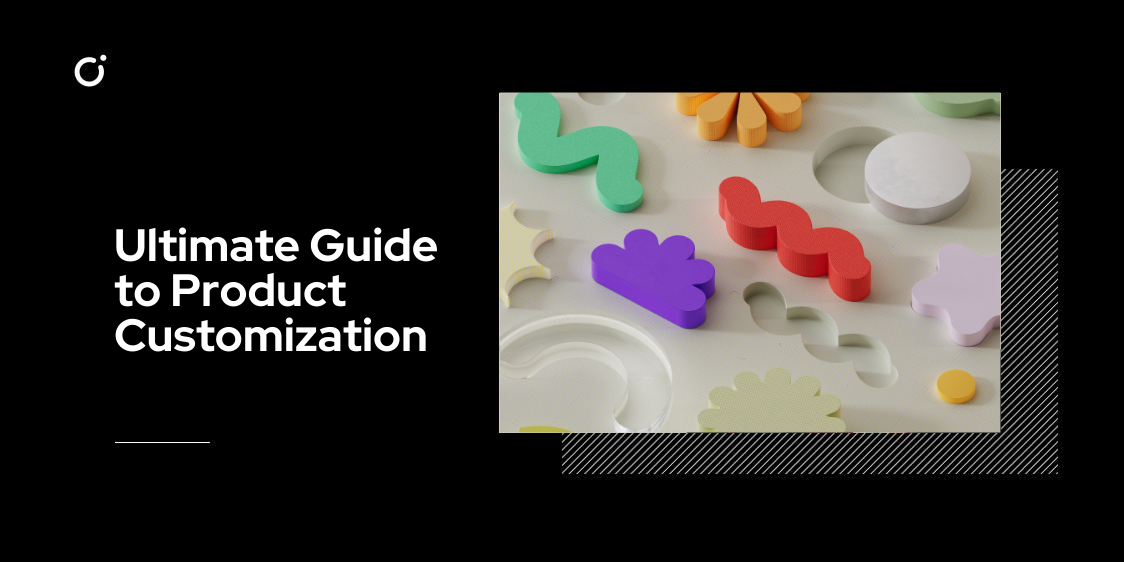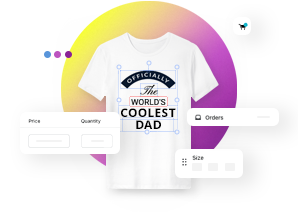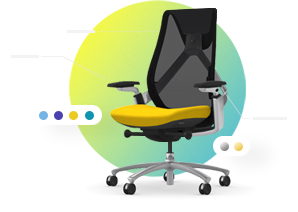On this page
Ultimate guide to product customization

Product customization is quickly becoming an essential part of the modern retail experience. Customers are no longer content with generic, mass-produced products and are increasingly looking for unique, personalized experiences that reflect their individual tastes and preferences.
Businesses that offer product customization can give customers exactly what they want while also tapping into the potential for increased sales, customer loyalty, and brand recognition.
This ultimate guide to product customization covers everything businesses need to know about unleashing creativity and personalization in their products, from understanding the concepts behind it to using tools and tips to make it successful.
What is Product Customization and How Does It Work?
Product customization, also known as personalized or made-to-order products, refers to the process of tailoring products to meet the unique preferences of individual customers.
The simplest form is adding a name or custom text to the product, but the current capabilities of product customization can offer a lot more. Users can customize product components (for example an office chair can have different wheels, armrests etc.) and even composition (skincare blend suited for specific skin conditions).
It's the art of giving consumers the ability to choose specific attributes and transforming a standard product into a personalized masterpiece.
The process involves a seamless integration of design tools, technology, and manufacturing processes. Companies leverage advanced software and interactive platforms to enable customers to visualize and customize their products in real-time. Once the customer finalizes their design, the manufacturer takes over, producing the customized item to the exact specifications.
The Rise in Demand for Product Customization: Relevant Statistics
The demand for product customization is increasing as customers become more interested in unique and personalized experiences. According to a survey conducted by Accenture, 56% of US internet users prefer customizing products over buying pre-made items. 53% of consumers between 16 and 24 years old are interested in customized clothing. This trend is being driven by customers’ desire for greater control over their purchases and the growing expectation that companies will cater to their individual needs.
Luxury brands are also getting in on the product customization trend, offering luxury goods with customizable features such as engraving personal messages or bespoke materials. This type of customization allows customers to create a truly unique item that reflects their own style and personality. As such, it has quickly become an attractive option for consumers looking for something special and one-of-a-kind.
The global product customization market is expected to grow at a compound annual growth rate (CAGR) of 10% from 2020-2026, according to Grand View Research Inc. This growth is being driven by rising consumer preferences for personalized products, advancements in technology that enable more complex customization options, and the need for businesses to differentiate themselves from competitors.
Customers are also more likely to do business with companies that offer customized products or services than those who don’t. A study by Deloitte found that 80% of consumers would be willing to pay more for this type of experience — proof positive of the power of product customization when done right.
Product customization offers businesses the opportunity to create unique customer experiences and build loyalty among customers seeking something special and tailored just for them. With so many benefits associated with this trend, it’s no wonder why demand for product customization is soaring — and why businesses should take advantage of this opportunity now before they miss out on its potential rewards!
Benefits of Product Customization for Business
-
Unique Expression: Customization empowers customers to express their personality, taste, and individuality through their chosen designs, leading to a deeper emotional connection with the product.
-
Increased sales: Customers are more likely to buy a product if they can customize it to their own needs and preferences.
-
Increased brand loyalty: Customers who have a positive experience with product customization are more likely to become loyal customers.
-
Decreased Returns: One of the primary reasons for product returns, especially in sectors like apparel, is a mismatch between expectation and reality. Customization helps bridge this gap. When customers actively participate in creating a product tailored to their preferences, they are less likely to be dissatisfied with the end result. Moreover, understanding their specifications in detail reduces the chances of errors.
-
Increased customer engagement: Product customization can help businesses engage with customers on a deeper level. By allowing customers to play an active role in product design, businesses transform a simple transaction into a collaborative process. This interaction keeps customers invested, ensuring they spend more time on the platform, and increasing the chances of additional sales.
Product Customization examples and use cases
Nike - Nike By You
Description: Nike allows customers to design their shoes by choosing materials, colors, and other design elements. This enables sneaker enthusiasts to own a unique pair that aligns with their style and preference.
Outcome: The Nike By You initiative has not only driven sales but has also deeply engaged customers, creating a buzz on social media and positioning Nike as a leader in customized athletic footwear.
Dell - Customized PCs
Description: Dell offers a "Build Your Own" option where customers can select components based on their computing needs, from memory to type of processor and storage.
Outcome: This has positioned Dell as a go-to brand for those wanting PCs tailored to their specific requirements, be it gaming, graphics design, or basic office use.
Lego - Lego Mosaic Maker
Description: In flagship stores, Lego offers a Mosaic Maker that captures your portrait and turns it into a one-of-a-kind Lego set. Customers can then build their custom Lego portrait.
Outcome: Beyond just sales, this unique experience has driven foot traffic to Lego's flagship stores and fostered deeper brand engagement.
Timbuk2 - Custom Bags
Description: San Francisco-based Timbuk2 offers customers the chance to design their bags. Users can choose colors, materials, and patterns to align with their personal style.
Outcome: While Timbuk2 offers standard bags, their customization option has attracted a niche audience that values uniqueness and is willing to pay a premium for it.
Best Tools for Product Customization
1.Inkybay: This comprehensive tool offers a range of features, from personalized text to image uploads, enabling businesses to integrate complex customization options.
2. Productimize: With its robust 3D visualization and real-time rendering, Productimize is ideal for businesses looking to provide highly interactive customization experiences.
3. Zakeke: Zakeke offers an array of integrations with e-commerce platforms and an intuitive interface for effortless product customization.
4. No-Refresh: Specializing in apparel and fashion, No-Refresh provides tailored solutions for businesses seeking to offer customizable clothing.
5. Smart Customizer: Known for its user-friendly interface and versatility, Smart Customizer empowers businesses to create engaging product customization experiences. Its modular approach allows for easy integration, while its extensive library of design elements and real-time previews ensures that customers can create their perfect product with ease.
Tips for businesses that want to offer product customization
If you are a business that wants to offer product customization, there are a few things you need to keep in mind:
- Make sure the customization process is easy and intuitive for customers.
- Start small: introduce 1 or 2 customizable products to your catalogue, and if it goes well then scale.
- Offer various customization options to appeal to a wide range of customers.
- Price the product customization service competitively.
- Market the product customization service to your target customers.
- Have real-time previews. As customers customize products, provide real-time previews to show them exactly what the final product will look like.
- Set Boundaries: While customization is about giving choices, there need to be limits. Define what can and can't be changed to maintain brand consistency and manage production efficiently.
- Educate Customers: Offer tutorials or guidance on how to use customization tools. This can be in the form of videos, infographics, or step-by-step guides.
Conclusion
Product customization transforms shopping from a transaction into an experience, allowing customers to create products that resonate with their identity. By understanding the intricacies of customization, its benefits, use cases, and how to implement it online using the right tools, businesses can tap into the vast potential of personalized products. As technology continues to evolve, the future of product customization holds endless possibilities, bridging the gap between imagination and creation like never before.
Tags
You can add a conetnt on the right side bar.

